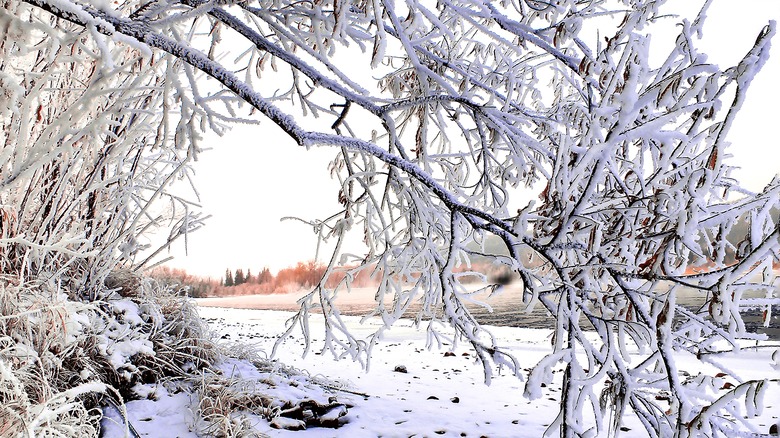The Difference Between A Snowstorm And A Blizzard Explained
When it comes to the weather, lots of us are prone to hyperbole. "It's blowing a gale," we'll declare, as soon as the wind gets up. The fact is, though, these are often technical terms. As the National Weather Service reports, if the winds haven't reached an 8 on the Beaufort wind force scale (a wind speed of 39 to 46 mph higher), it isn't really blowing a gale at all. While there's no time for such semantics when heavy snowfall has half-buried your car, there's a similar difference between a literal blizzard and a snowstorm.
As Mental Floss states, snowstorms are primarily characterized by snow and cold temperatures (of course), with all the travel disruption and associated precautions this tends to entail. This is no small flurry of snow; heavy rain can also accompany a true snowstorm. These elements are naturally variable, so a snowstorm or winter storm doesn't necessarily have to boast all of them to be classified as such.
The main additional danger blizzards pose is the same one that qualifies heavy wind as a literal gale: gusts of a certain strength. Difference Between states that only accompanying winds of 35mph are strong enough to officially be designated blizzard-worthy.
Ferocious winds, time duration, and visibility separate snowstorms from blizzards
There are two additional factors that separate heavy snowfall from full-blown blizzards: the length of time the storm is expected to last, and how much it affects visibility in the region. Blizzards, per Mental Floss, must rage for three hours or more, while they must also prevent those in its grip from seeing any further than a quarter of a mile. Curiously, Merriam-Webster boasts two slightly different definitions of the word "blizzard," though between "a long severe snowstorm" and "an intensely strong cold wind filled with fine snow," all three vital blizzard-defining factors are covered.
World Atlas states that blizzards can result when cold, drier polar winds meet warmer equatorial winds with more moisture. Where they collide, a hazardous area is formed where snow is produced and blasted around. With ground blizzards, snow falls but whirls near ground level without settling. These conditions vary around the world, World Atlas goes on, with some blizzards in Antarctica reaching winds in excess of 100 mph. For comparison, per the National Hurricane Center and Central Pacific Hurricane Center, winds of 74 mph and above are deemed hurricane winds.
While snowstorms do develop into blizzards when the winds become strong enough, and blizzards are certainly more infamous, they aren't necessarily more destructive or dangerous. As Mental Floss concludes, they blow the snow around so much that they may leave behind very little, unlike snowstorms.

